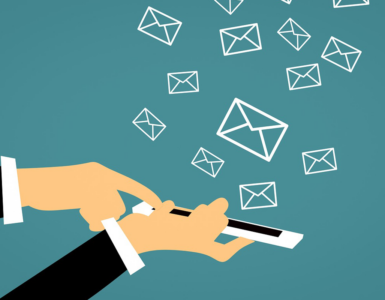Emails are an important part of marketing, and these tips for effective email marketing will improve the results of your campaign. You need to keep up with the latest email marketing practices to get those results, so keep reading and find out about 12 tips for effective email marketing that brings results.
1. Personalize the email
Personalization is crucial, and it doesn’t just mean addressing the reader by name. If you only change the name of the subscriber in your emails you’re not going to get great results. Your emails need to be relevant, and you need to anticipate the subscriber’s needs. Sending timely emails also matters, but, most importantly, you need to collect relevant data from customers.
2. Encourage customers to reply
Just throwing information in an email to your subscribers isn’t going to do any good. Maybe even the most important one of all the tips for effective email marketing is to get your subscribers to respond to your emails. You need to encourage them to reply, and you do this by addressing them directly and promising something that makes your email different from all the others that they ignore. Your subscribers want to feel like they’re communicating with a real person who actually cares about their needs. So, your emails can’t sound like a machine wrote them, and you need to encourage them to click on a link or respond to your email by using a distinctive and entertaining voice.
3. Nurture the relationships with customers
Promotions aren’t the only purpose of email marketing, and you need to establish healthy relationships with your subscribers and nurture those relationships. They need to feel like their needs matter to you, and you want them to keep reading your emails.
4. Get subscriptions
Even when you reach a lot of subscriptions, you shouldn’t stop adding emails to the list. This is not hard to do, and it’s one of the tips for effective email marketing. Keeping a signup feature on the blog page, home page, and anywhere else where possible, helps you passively grow your subscription list.
5. Use automation
Automation helps you improve the efficiency of email marketing, increase conversation rates and easily scale. In addition, it gives you more time for other ways of growing your business.
 6. Stay out of the spam folder
6. Stay out of the spam folder
Naturally, one of the tips for effective email marketing is to stay out of the spam folder because your emails are otherwise useless. You do this by sending emails only to those who choose to subscribe, avoiding all caps and too many punctuation marks but in many more ways as well. Spam filters are different, and what doesn’t get flagged by one might get flagged by another. Make sure that HTML in emails is properly formatted, and keep learning how to avoid ending up in the spam folder.
7. Don’t send emails to the entire list
The last thing you want is for your customers to find your emails irrelevant, so don’t ever send an email to the entire list. Segmentation is when you group customers that have some attributes in common, and this lets you increase efficiency by designing customer journeys specifically for the group. It also lets you personalize content so that your customers would be more likely to take action.
8. Include calls to action and interesting links
Most of the time, the goal of an email marketing campaign is the increase in traffic to a website, often a landing page. More clicks mean more customers and visually striking buttons will tempt your customers to click on a link especially if they include text such as “Learn more here! Download Now!” The more exciting action you describe the more enticing your audience will consider it, and that’s what you should have in mind when creating calls to action.
9. Don’t make it difficult to unsubscribe
You might think that making unsubscribing easier will make you lose clients, but if you make it difficult for them to opt out they’ll flag your emails as spam. This will just cause you problems later.
10. Make sure that the emails are mobile-friendly
The astonishing number of 66% of emails gets opened on tablets or smartphones, so you need to optimize your emails for viewing on phones. If you don’t do this, you are risking losing a lot of clicks.
11. Testing is everything
Don’t ever send your emails without double-checking everything. You need to make sure that the emails look good on all email tools, that all the links work and that they’re properly personalized. Experiment with different body text, subject lines, and calls to action to see what your audience finds most engaging. You can use A/B testing modules in some email tools and compare the results, but you can even run your own tests by sending the emails at different hours and days to see when the response rate is the best. Testing is one of the most important tips for effective email marketing so send the first emails to your employees before sending them to your subscribers.
12. And so is tracking
How many emails were undeliverable? When did your subscribers open the email? Making sure to track your data is also one of the most important tips for effective email marketing. Google Analytics can help you with this, and you’ll easily tailor your message to those who’ll use it.











